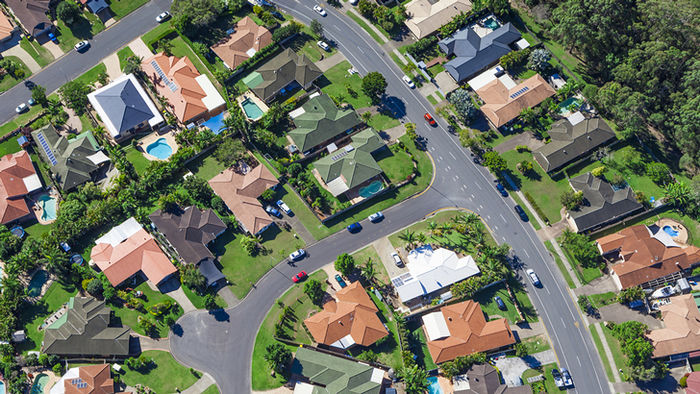The cost of housing in Brisbane, Melbourne and Sydney
By Paul Ross
Australia's economic circumstances are increasingly driven by the dynamism, productivity, and competitiveness of its major cities.
Supported by their iconography and history, the upholding or reinventing of any city's brand, liveability and competitive position is critical in attracting people and investment.
Sydney, Melbourne and Brisbane are testament to this formula but such is their success that high housing costs have become a barrier to entry for a growing number of people.
Assessing affordability
As house prices climb, about 40% of Sydney's suburbs currently have a median price above the city mid-point. For units, it is closer to half.
In Melbourne, the median price of houses and units is about 25% lower than in Sydney, which has an obvious bearing on market participation and mortgage serviceability. Despite these more affordable entry terms, about half of Melbourne's suburbs have a median house price above the city median, while for units it is closer to 55%.
In Brisbane, median prices for houses and units are about 45% lower than in Sydney. Slightly more than a third of Brisbane's suburbs have house prices above the city median. Units, on the other hand, represent good value with only 16% of suburbs exceeding the city mid-point.
Supply and demand
In an effort to strengthen their capabilities and keep up with underlying demand, each of these cities is constructing affordable stand-alone homes on their urban horizons and medium- to high-density units across their inner and middle rings.
Sydney has grown by almost 1 million people since the millennium. With the population forecast to hit 5 million in late 2020 and 6 million in mid-2033, Sydney will have grown by more than 2 million since 2007.
Melbourne is enjoying high levels of overseas and interstate migration, and its ample supply of affordable and new housing will guide it towards 4 million in 2020 and 5 million some 16 years later. Brisbane, meanwhile, passed the 2 million mark in late 2008, with 3 million expected towards the end of 2028.
To meet future demand, existing housing stock and forecast completions are expected to remain strong in the medium term.
Accounting for 25% of national housing completions, Melbourne will lead the pack with a 7.5% increase in its total housing stock by June 2018.
Housing completions are expected to swell Sydney's stock by 5.5% but there are over-supply concerns in suburbs where a disproportionate number of new builds are forecast relative to existing dwellings. An oversupply of units also looms in Melbourne and Brisbane, with the Queensland capital likely to be more problematic given the size of its construction pipeline and sluggish forecast population growth.
Increasing the supply of housing has improved the fiscal position of Australia's major cities but affordability remains an issue, particularly in Sydney. An inability to solve this problem has adverse effects on any city's capabilities, and people are drawn to other, more affordable urban centres such as Melbourne. While migrating interstate is an option, few take it up. As a result, the deterioration in housing affordability is channelling a growing number of people into stressed mortgage positions or trapping them in longer-term rental arrangements.
The Australian dream
In a society where home ownership is considered a rite of passage, the prospect of long-term renting remains unpopular.
However, income constraints and anaemic wage growth have brought about a residential ownership shift from stand-alone homes to multi-dwelling residences. For a growing number of people, this transition has become not only a more attractive financial option but a better value proposition in terms of lifestyle.
The allure of being connected to urban amenities has witnessed a growing number of people moving into the inner and middle ring communities in Sydney, Melbourne and Brisbane, where new and gentrified multi-dwelling residences are prevalent.
A trend not confined to price-conscious Gen X and Gen Y, units are increasingly popular with other age groups and family types such as baby boomers, DINKS (double income, no kids) and singles.
High-density living does not appeal to everyone and many people still aspire to owning a stand-alone home. But constrained by costs, buyers are attracted to frontier communities on the fringes of Sydney, Melbourne and Brisbane. But many of these communities face infrastructural challenges, which unless resolved will only deepen as they absorb growing numbers of people.
Investment possibilities
Recommendations are as diverse as the challenges. It depends on your perspective on the issues affecting each of these markets. Key differentials are whether you are an investor or an owner occupier, the depth of your pockets, your purchase time horizon and your appetite for risk.
In Sydney, which is burdened by high costs and infrastructural woes, the property party is unlikely to re-start this side of 2020. Melbourne currently offers greater affordability and capital gain but access to amenities in some of its frontier communities may concern some buyers, while some of its inner-city housing products might not offer sufficient yield or satisfy aesthetic demands. Brisbane is by far the most affordable and is currently being tapped by real estate investors. High levels of supply are in the construction pipeline, but the lack of diversity in the Brisbane economy may curb population growth and present over-supply challenges, which could flat-line prices.
No market is free from inefficiencies but a consideration of these supply and demand indicators will help you think about your interests and options and guide you towards more efficient long-term decision making.
Get stories like this in our newsletters.


